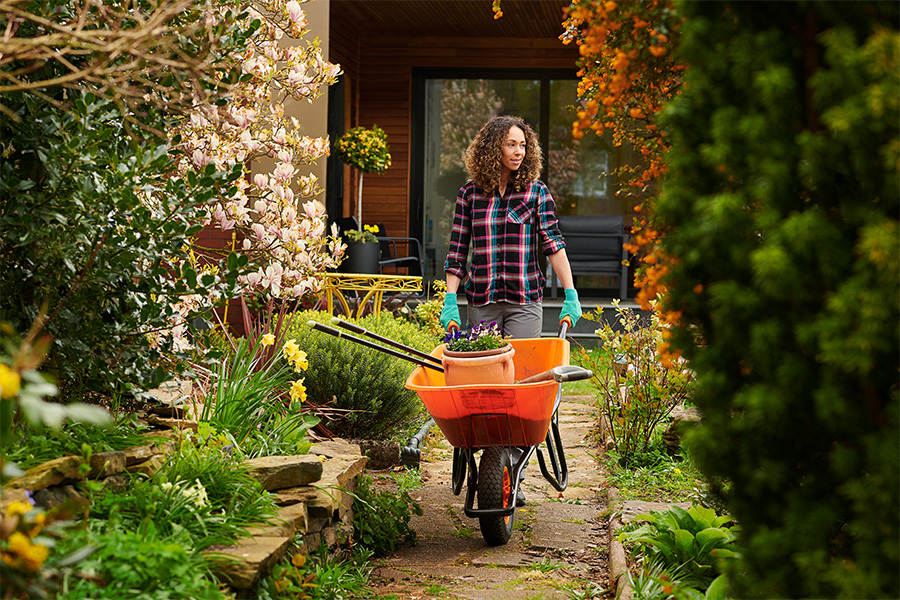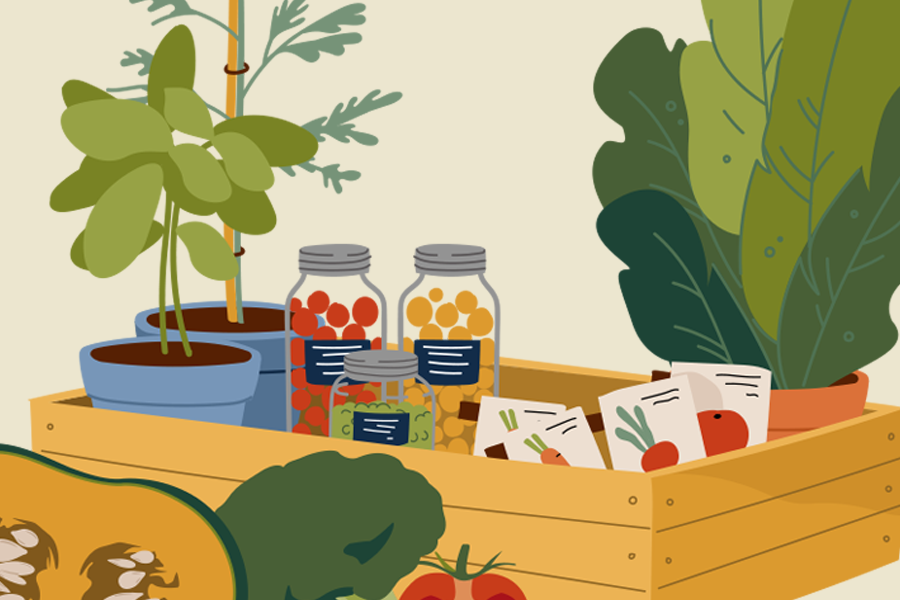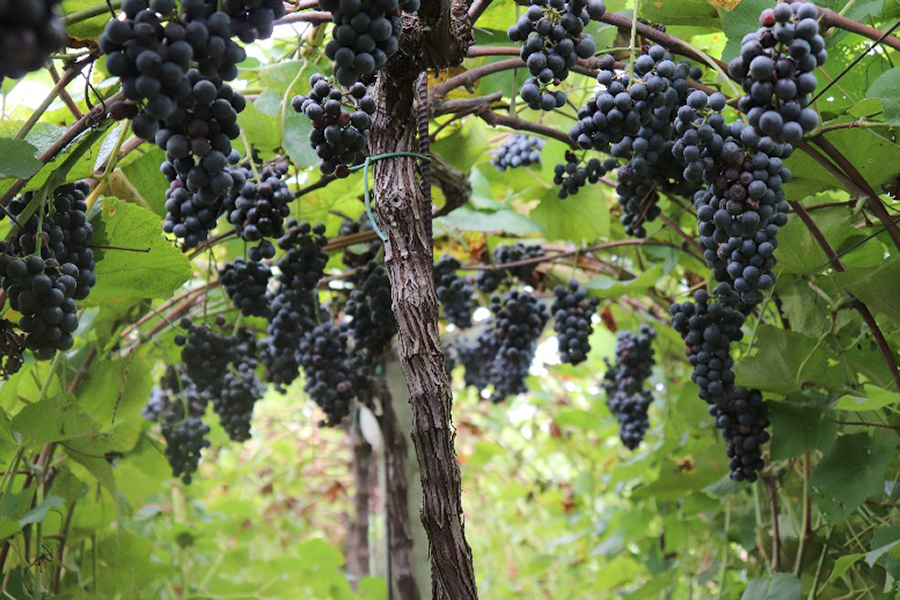Horticulture
-

This publication is a comprehensive guide to growing vegetables organically, including location, planning, irrigation, soil preparation, composting, fertilizers, successive planting and crop rotation, mulching and insect control.
|
-

Temperatures affects plant growth and distribution. This publication explains how low temperatures (chilling and freezing) affect plant growth in production greenhouses, nurseries, and landscapes. These three environments have different causes and effects, each requiring unique responses to avoid injury. This publication outlines different techniques that can be used to avoid cold injury to plants.
Paul A. Thomas, Bodie V. Pennisi, and Eric Stallknecht
|
-

This bulletin is intended to provide to provide both veteran and new growers an overview of commercially popular pruning strategies and a greater depth of understanding of the theory behind pruning method practice. Dormant pruning is an important vineyard management decision as it sets the crop level and canopy density before green tissues are present. Growers must take several considerations into account when choosing a pruning method, including vineyard design, cultivar, and labor force throughout the year. Some growers may choose to adopt several different pruning strategies to successfully manage their vineyard. Regardless of the pruning method, it is important to develop a plan that includes scheduling when and how each vineyard block will be pruned throughout the dormant season. Effective dormant pruning sets the stage for successful vineyard management throughout the forthcoming growing season.
Timothy Coolong and Sarah Lowder
|
-

B 577-SP
Construyendo Huertos Caseros
Un huerto bien administrado y productivo es una delicia. Este puede proveerle a su familia y a usted con una variedad de vegetales nutritivos y saludables que pueden ser disfrutados frescos o en conserva para su utilización en el futuro. El trabajar en un huerto casero también puede ser un pasatiempo gratificante, un proyecto para miembros 4-H y una manera en la cual mejoramos nuestra condición física. Aunque es cierto que podemos comprar en el supermercado vegetales frescos de alta calidad, congelados o enlatados, muchos de nosotros estamos inclinándonos más hacia el cultivo de vegetales en nuestro propio hogar para suplementar los alimentos que compramos en el supermercado.
In inglés, this publication explains everything you need to know about growing a successful home vegetable or herb garden.
Bob Westerfield and Jonael Bosques Mendez
|
-

Georgia pecan orchards are often found growing adjacent to fields of annual row crops, timber, and pastures. As a result, the tree canopies of these orchards are susceptible to injury from herbicide drift from the adjacent operations when herbicide applications are made under conditions unsuitable for spraying. Drift may also occur when cotton fields are sprayed with chemical defoliants in the fall. Pecan tree roots often extend into an adjacent row crop fields and can compete with the row crop for available soil, water, and nutrients. Under such conditions, trees may also absorb residual herbicides from the soil in these fields.
Lenny Wells
|
-

This bulletin contains guidelines to determine irrigation scheduling for vegetable production in Georgia. Irrigation scheduling varies with water management and growers may require different technologies to properly manage water application. This information is supplied to help irrigation managers schedule and operate irrigation systems to optimal capacity, applying water precisely to the crop for maximum effectiveness and high efficiency.
Juan Carlos Diaz-Perez and Timothy Coolong
|
-

This resource describes the process of saving seeds, particularly for heirloom varieties in the Georgia garden. This guide is useful for both home gardens and school or community gardens.
Becky Griffin, Clark MacAllister, Ashley Hoppers, and Jacob Williams
|
-

The “Vineyard Canopy Management Series” of Extension circulars reviews a number of canopy-management practices individually. Each circular advises how to effectively implement a canopy-management practice and why it is important to do so. The practices collectively known as “canopy management” aim to maximize canopy leaf exposure, maintain crop yield and quality, decrease disease, and improve vineyard health and sustainability. Though labor-intensive, canopy management should not be considered optional if the goal is annual production of high-quality grapes and wines.
Cain Hickey
|
-

Results from this study are preliminary, as only 2 years of data have been collected. Research over longer periods of time will be more revealing about how mechanical pruning will impact the perennial crop yield and health of the vineyard. Mechanical pruning is an option for dormant pruning ‘Carlos’ in situations where labor is unreliable and/or there is a low labor-to-acreage ratio which precludes the ability to finish pruning in the dormant period (December through March).
Concerns remain regarding the inaccuracy of mechanical pruning and the resultant amount of diseased and unproductive grapevine wood that remains in the canopy. It therefore may be a good practice to manually prune blocks of the vineyard on a recurring basis in order to reduce canopy congestion and the potential for disease buildup. Mechanical pruning may not be best practice in fresh-market muscadine cultivars, particularly those that produce bronze fruit that are less tolerant of rots and defects than purple fruit.
Mechanical pruning ‘Carlos’ and ‘Noble’ vineyards is worth consideration as these popular juice muscadine cultivars are vigorous and productive and may therefore sustain perennial health under high bud densities. Because of the preliminary nature of this report, it is recommended that mechanical, or “minimal” pruning, be trialed in vineyard blocks or sections before it is widely implemented with confidence.
Alicia Holloway
|